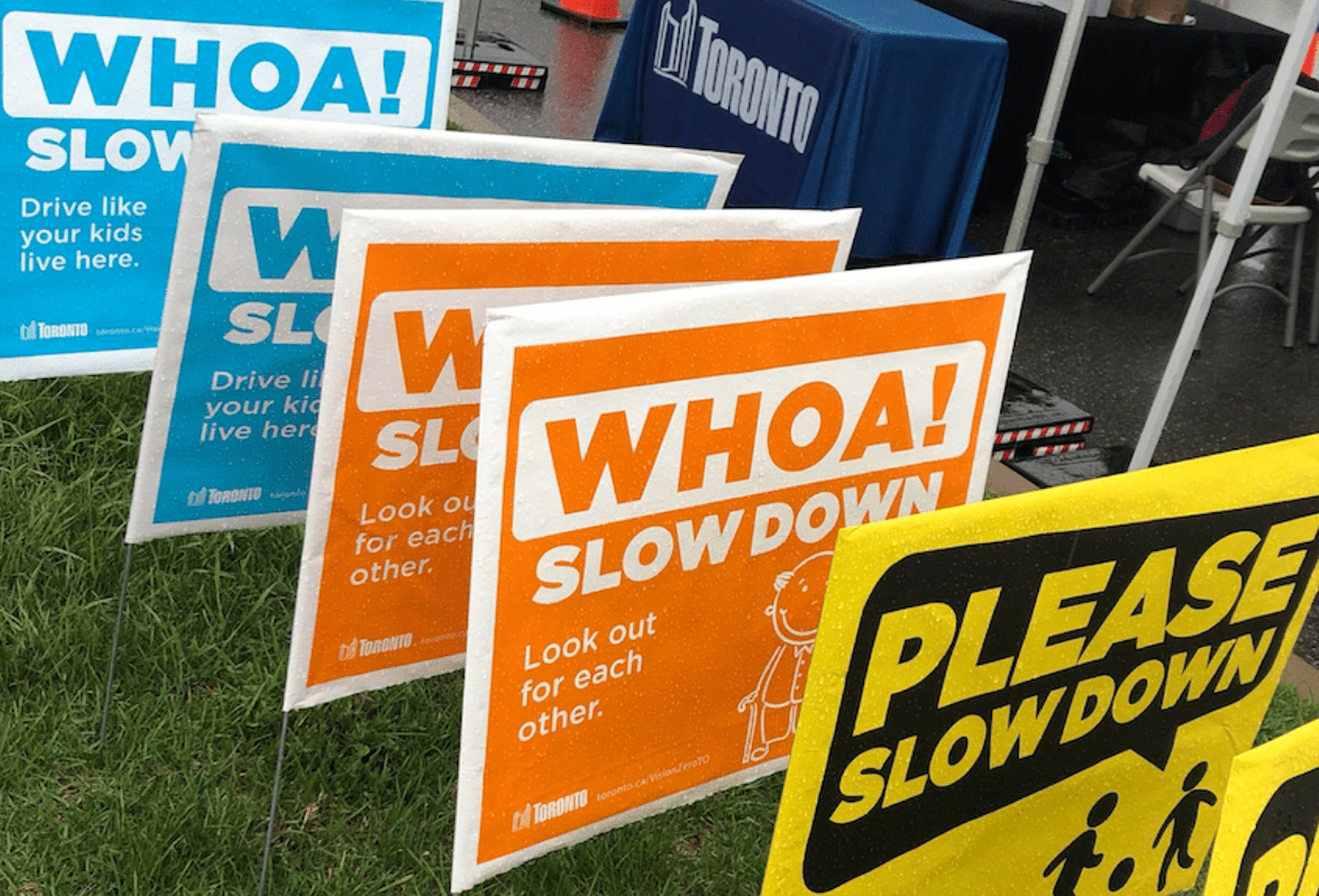It can be intimating to walk or bike to school when the route to get there doesn’t feel safe; maybe there are fast cars, big trucks, or an icy layer of snow.
In Toronto – one of the cities where we deliver School Travel Planning – many residents have natural concerns about the safety of pedestrian and cycling infrastructure. In fact, safety concerns are a main reason why parents drive their children to school despite living within walking or wheeling distance.
Toronto mother Naomi, for instance, describes how the lack of adequate pedestrian infrastructure around her son’s elementary school led to confusion and unease when crossing the street as a four-year-old on his first day of junior kindergarten. He stood across the street from his school, seeing all the cars in front of it, and asked where they were “supposed” to cross the street. For Zoë and her Dad Lanrick, biking 3km to school every day can be scary; they often face heavy traffic, and faded paint lines are their only “protection” from cars.
So, how can we make these routes safer and more comfortable for students choosing active modes of travel? This blog outlines some of the efforts already being made and offers solutions for standardizing high-quality active travel routes in communities across the province.
Safer School Zones
Making school zones safer at the local level is guided by Ontario’s Highway Traffic Act. In 2016, the Highway Traffic Act (Bill 90) mandated that municipalities across Ontario turn all roads adjoining schools into ‘School Safety Zones’ that must be marked with special signage and roadway markings. To their discretion, municipalities can prescribe a lower speed rate in these zones (and since 2017, they can also use automated speed enforcement systems).
School safety zones can be seen as a starting point to improving road safety along school routes. However, more substantial policy change is needed to make these routes more favourable for active modes of travel in all municipalities in Ontario.
“Active School Travel Zones”
An “Active School Travel Zone” is a relatively new concept that emerged as a policy recommendation from our joint research project with the Human Environments Analysis Laboratory at Western University.
From the project report, recommendation A.2.4 is to establish a provincial “Active School Travel Zone” designation for areas located within a specified “Active Travel Distance” along routes to school. This designation would create a guiding framework for municipalities to ensure that their school routes are safe and convenient for students choosing active modes of travel.
Generally, Active School Travel Zones would prioritize walking, cycling and transit over cars. More specifically, they would be prioritized for enhanced pedestrian crossings, sidewalk improvements, and cycling infrastructure improvements. This could mean swifter pothole repairs, installing protected bike lanes, and having well-maintained multi-use trails. For those ready to brave the winter chill, these zones would be prioritized for snow clearance.
The roads would also use traffic calming measures and, where possible, not be a truck route and prescribe low speed limits (e.g., 30 km/hr). Lastly, the zones would have wayfinding signage, be shown on published ‘Routes to School Maps,’ and have ‘Drive to 5’ drop-off locations.
In other words, establishing designated zones for active school travel would make the journey to school friendlier for students to walk, bike, rollerblade, “scoot,” or skateboard year-round.
Walking, Biking, and Wheeling Forward
Placing active modes of travel at the forefront of provincial and municipal transportation planning will play a vital role in reducing emissions in our cities and helping people of all ages get more physical activity.
We encourage you to consider the role you play in making school zones safer and happier places for students considering active modes of travel. What do students in your community need from you? How could you get involved? Are there any active travel advocacy groups where you live?
To learn more about Active School Travel Zones and the 56 other policy recommendations that came of the “Investigation of Supportive Policy for Active School Travel,” we encourage you to check out the project report.
Resources
ola.org/en/legislative-business/bills/parliament-41/session-2/bill-90
ontario.ca/laws/statute/S17009
schooltravel.ca/activity/routes-to-school-mapping/
schooltravel.ca/activity/wayfinding/
utoronto.ca/news/why-walking-school-better-driving-your-kids
ontarioactiveschooltravel.ca/wp-content/uploads/2022/08/Supportive-Policy-Report-AST-2022.pdf
Featured Image: Lawn signs from Toronto’s Vision Zero road safety campaign, October 2017

